UNESCO World Heritage / Sacred region Munakata
This Tourist information is created by Japan KYUSHU Tourist for enjoyment
of your travel. We are a Travel Agent in Fukuoka specializing in Kyushu.
When you have an idea or a plan for traveling in Kyushu, Japan, please contact
us by sending an Enquiry. Make an Enquiry
Sacred Island of Okinoshima and Associated Sites in the Munakata Region
The sacred island of Okinoshima, situated between the Japanese archipelago and the Korean
peninsula, has long attracted the devotion of the local population in the Munakata region, who
possessed advanced nautical skills. Large-scale rituals utilizing an enormous quantity of precious
votive offerings were conducted on the island to pray for safe ocean voyages from the 4th to the
9th centuries, a period of more than 500 years during which overseas exchange occurred frequently
in East Asia.
Ritual sites bearing witness to the successive phases of ancient rituals that chronicle the formation
of indigenous beliefs in Japan have survived to the present almost intact, because the island of
Okinoshima, as an object of worship, has been protected by established taboos strictly limiting
access to the island.
UNESCO World Heritage Sites
Munakata Shrine Hetsu-gu
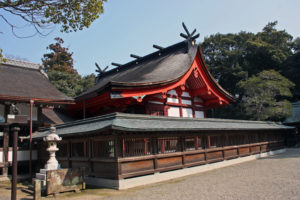 |
Hetsu-gu is one of the three shrines that comprise Munakata Shrine
and enshrines Ichikishimahime-no-Kami, one of the three female
deities of Munakata. Visitors passing through the torii gate and
proceeding along the path will find the Main Hall, dedicated to
Ichikishimahime-no-Kami, beyond the Shinmon gate
|
Takamiya Saijo
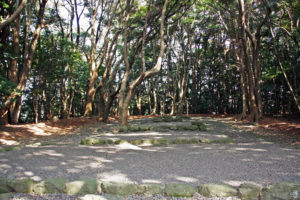 |
The steps lead to Takamiya Saijo (Ceremonial Site), where ancient
rituals were performed. Takamiya Saijo is very important since the
rituals currently observed at Hetsu-gu originated there. To the
northwest of the ceremonial site, visitors can view the marine route
linking Hetsu-gu with Okinoshima via the Tsurikawa River, Oshima.
|
Shinbaru-Nuyama Mounted Tombs
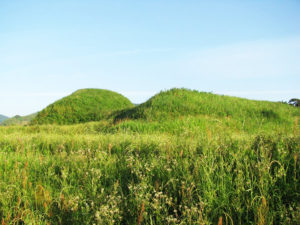 |
The Tomb Group comprises the tombs of the Munakata clan, an ancient
powerful family that led interactions with overseas countries.
The Munakata clan also performed rituals on Okinoshima and nurtured
the tradition of faith in in the sacred island
|
Munakata Shrine Nakatsu-gu
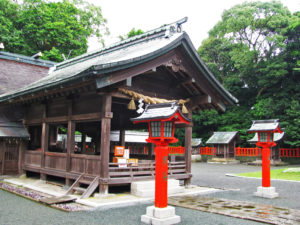 |
Nakatsu-gu, one of the three shrines that comprise Munakata Taisha,
is situated on this island and enshrines Tagitsuhime-no-Kami, one of
the Three Goddesses of Munakata.
|
Munakata Shrine Okitsu-gu Yohaisho
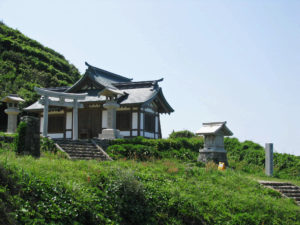 |
Because Okinoshima has long been an object of worship, public
access to the island is strictly limited. The Okinoshima landscape has
been preserved intact until now because local people have strictly
observed various taboos. For example, even if one is allowed to land
on the island, one is forbidden to speak a word about what one has
seen or heard there.
|
-
Munakata & Fukutsu travel guide, UNESCO World Heritage








